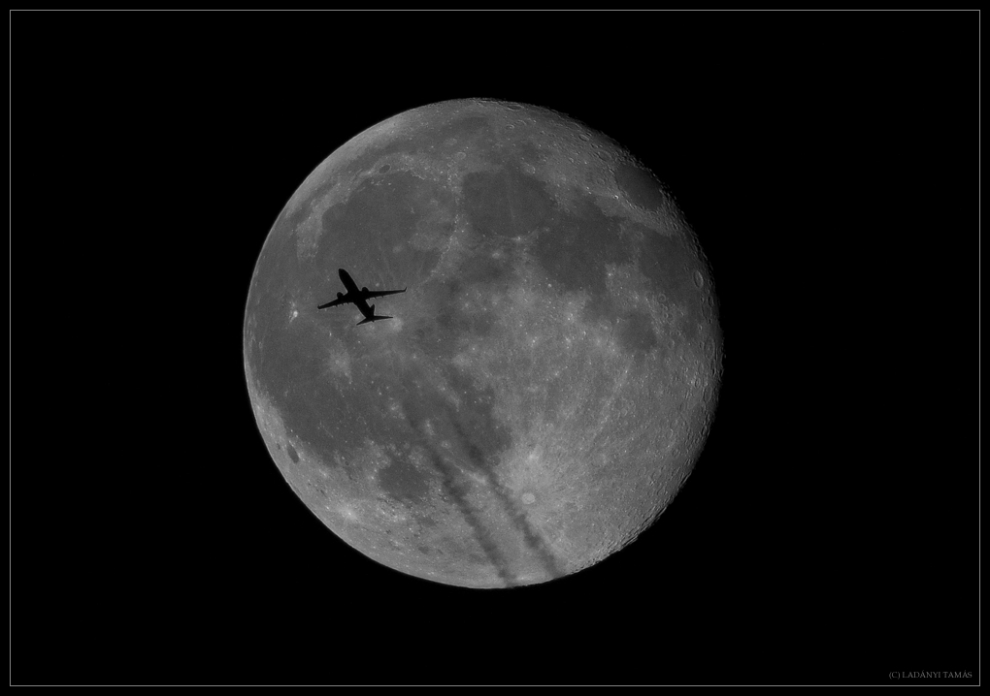Spectacular Silhouette: Skywatcher Sees Plane Crossing Small Full Moon

An airplane appears unusually large against the smallest full moon of the year. Hungarian skywatcher Tamas Ladanyi of The World At Night(TWAN) managed to capture this spectacular image Oct. 11, 2011.
"The October full moon's beautiful celestial spectacle served despite the fact that the planet was at the furthest," the astrophotographer wrote on his website.
This full moon's rather puny October appearance is 12.3 percent smaller than when it came into view in its most super-sized form back in March of this year.
The moon seems to change size to us because it has an elliptical orbit. The moon in this photo appears small because it is at apogee, the point where an object is at the greatest distance from the center of the Earth. When the moon appears large it’s closest to Earth at a point called perigee.
It takes a "synodic" month or 29.53 days between one full moon to the next. However, the time it takes for the moon to go from perigee to apogee and then back again to the closest point to us is called an "anomalistic" month. This is usually 27.55 days.
Editor's note: If you have an amazing skywatching photo you'd like to share for a possible story or image gallery, please contact managing editor Tariq Malik at tmalik@space.com.
Follow SPACE.com for the latest in space science and exploration news on Twitter @Spacedotcom and on Facebook.
Breaking space news, the latest updates on rocket launches, skywatching events and more!
Nina Sen is a freelance writer and producer who covered night sky photography and astronomy for Space.com. She began writing and producing content for Space.com in 2011 with a focus on story and image production, as well as amazing space photos captured by NASA telescopes and other missions. Her work also includes coverage of amazing images by astrophotographers that showcase the night sky's beauty.
